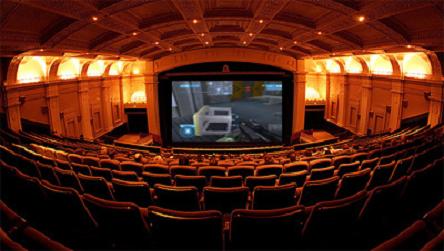
Film critic Ty Burr of The Boston Globe has written a huge article on this recent trend with theaters:
The difference can be extreme. Chapin Cutler, a cofounder of the high-end specialty projection company Boston Light & Sound, estimates that a film projected through a Sony with the 3-D lens in place and other adjustments not made can be as much as 85 percent darker than a properly projected film.
So why aren’t theater personnel simply removing the 3-D lenses? The answer is that it takes time, it costs money, and it requires technical know-how above the level of the average multiplex employee. James Bond, a Chicago-based projection guru who serves as technical expert for Roger Ebert’s Ebertfest, said issues with the Sonys are more than mechanical. Opening the projector alone involves security clearances and Internet passwords, “and if you don’t do it right, the machine will shut down on you.’’ The result, in his view, is that often the lens change isn’t made and “audiences are getting shortchanged.’’
Filmmakers and film critics might notice such things, but how about the common joe?
Educating audiences and overcoming this inertia can be difficult. Boston Light & Sound’s Cutler said, “We have a tendency to walk in the door, we’ve paid our money, bought our popcorn, and we want to sit down and watch something. We’re loath to get up and leave because we’ve put that much effort in.’’
Generally speaking, you should be getting a bright, crisp picture, and not the kind of picture you would get as if you were wearing 3D glasses.
Have you seen a movie which you had to squint your eyes to see what was going on in the film? Do you care if you do notice?





